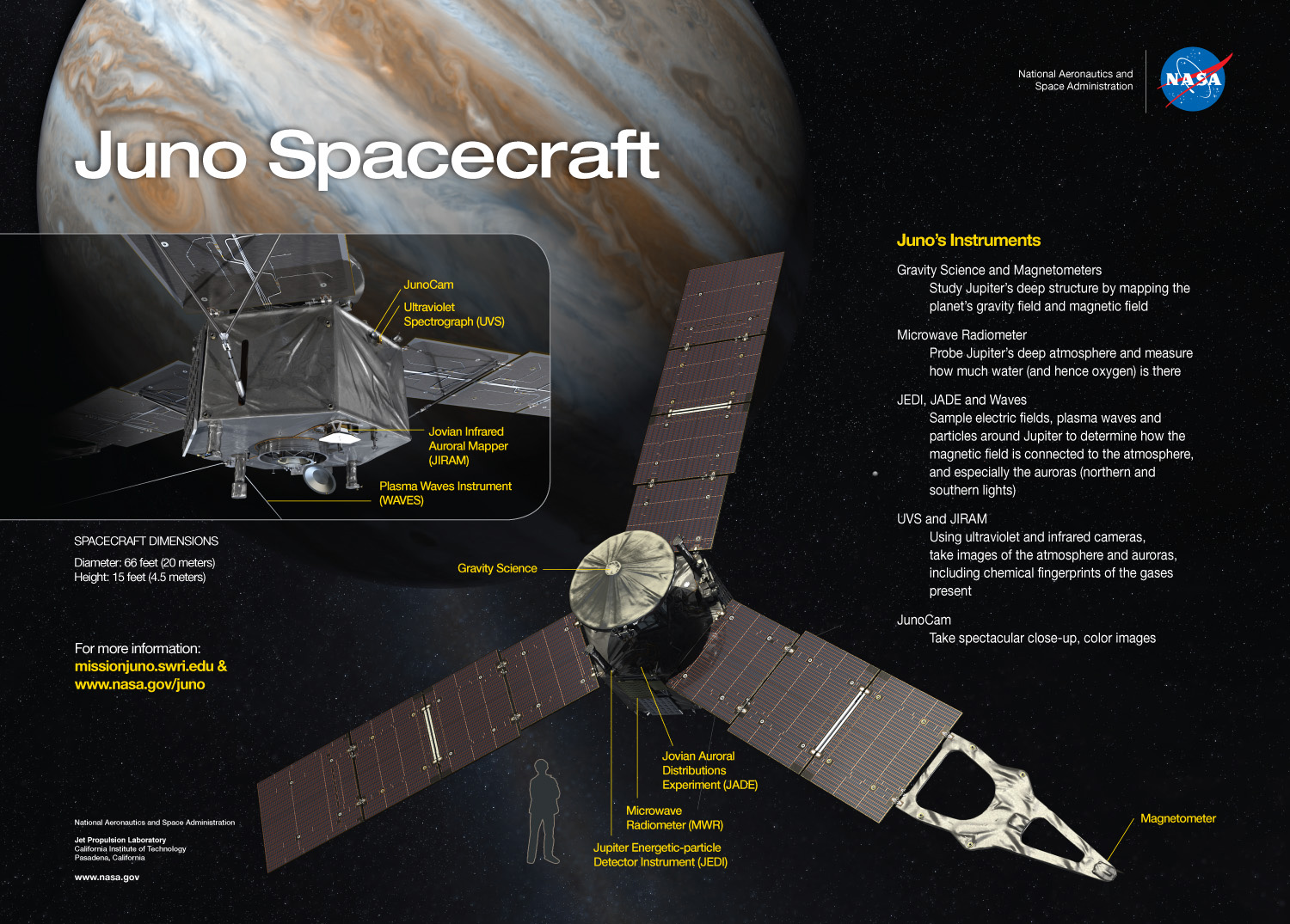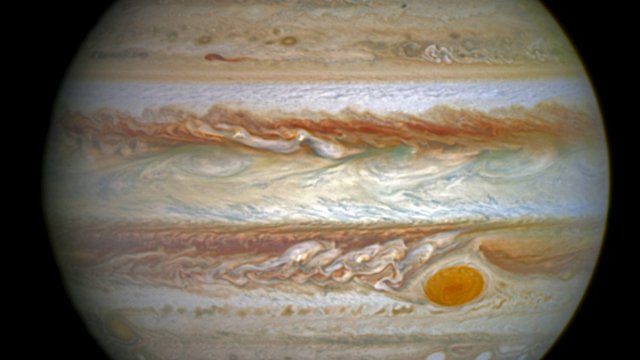The Juno satellite is a satellite of NASA. It left Earth five years ago. The Juno Satellite had to fire a rocket engine to slow its approach to the jupiter and get caught by jupiter’s gravity.
A sequence of tones transmitted from the spacecraft confirmed the braking manoeuvre had gone as planned.
Receipt of the radio messages from the Juno satellite prompted wild cheering at Nasa Room control in Pasadena, California, USA.
Scientists use the Juno spacecraft to sense the planet’s deep interior. They want to study the structure and the chemistry of jupiter which hold clues. The giant juptier planet formed some four-and-a-half-billion years ago.
It is the first spacecrafts which enters the orbit of jupiter. No previous spacecraft has dared pass so close to Jupiter because the intense radiation of jupiter belts can destroy unprotected electronics.
By avoiding the danger of radiation, the probe should now be able to prepare its instruments to start sensing what lies beneath Jupiter’s opaque clouds.
Juno got insertion in orbit in a large ellipse around the planet that takes just over 53 days to complete.
A second burn of the rocket engine in mid-October will tighten this orbit to just 14 days. It is then that the science can really start.
Juno has eight remote sensing instruments. Juno will use its eight remote sensing instruments plus its camera to peer down through the gas. This planet has many layers. The Juno uses their sensor to measure the composition, temperature, motion and other properties of the planet.
The priority of Juno will be to determine the abundance of oxygen at Jupiter. Oxygen will be bound up in the water of planet.
Juno also study about the immense magnetic field its spectacular auroras. Scott Bolton who is Principal investigator at NASA said Juno helps us to understand about the Great Red Spot of Jupiter which is known as a long-lived giant storm of the planet.
NASA plans to run Juno through to February 2018 because the strong radiation of jupiter can damage the Juno. The performance of the camera of Juno is expected to degrade rapidly within a few months due to the radiation.
Some feature about giant Planet Jupiter:
- Jupiter is 300 more massive times than Earth and 11 time wider.
- One day is 10 hour long on Jupiter and it take 12 Earth year to orbit the Sun.
- Jupiter resembles a star, it has mostly hydrogen and helium.
- The Giant Red Storm is 2 times wider than Eart








